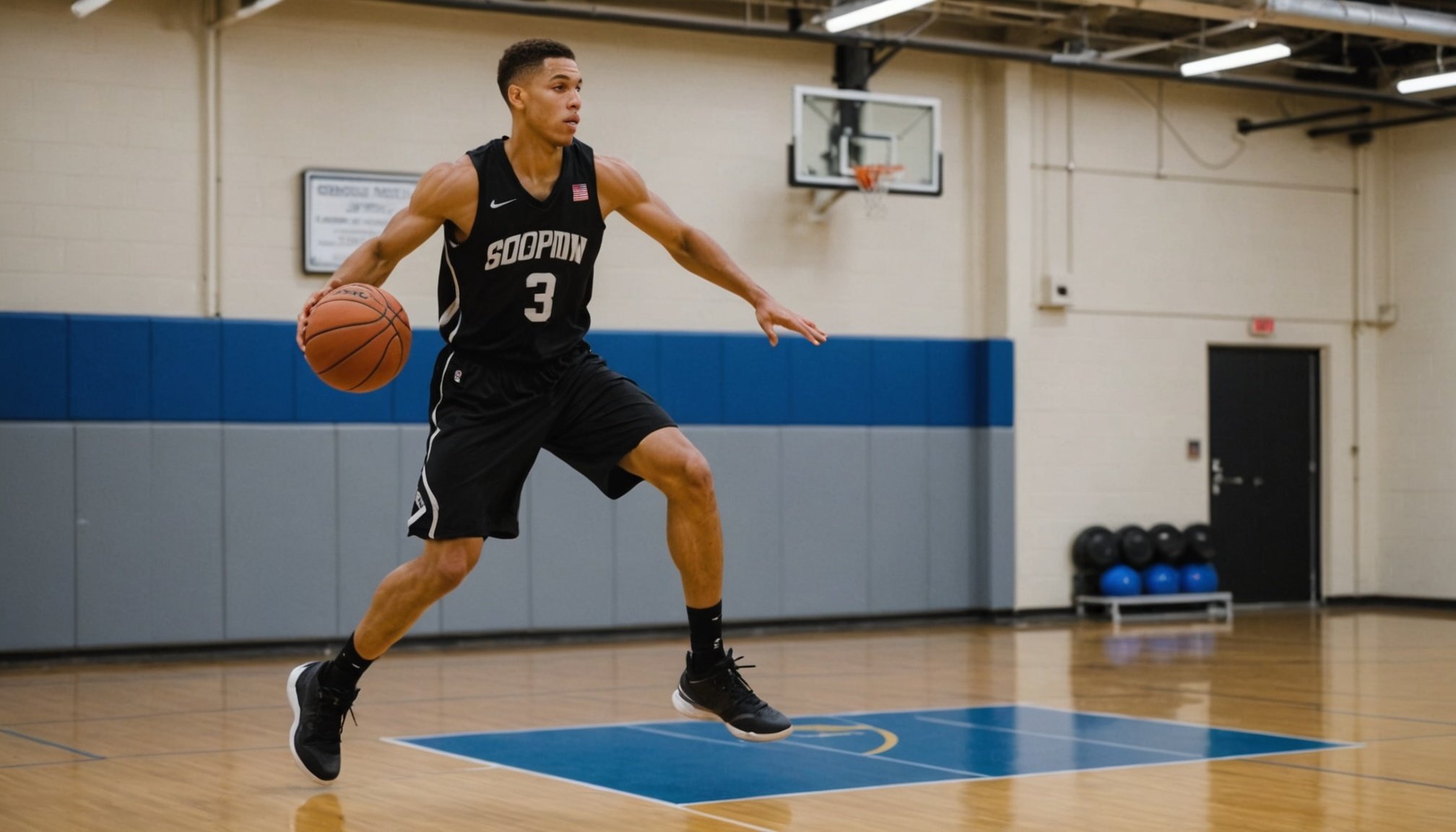Best Power Exercises for Jumping Explosiveness
Enhancing explosive strength is crucial for boosting your vertical leap, especially in sports like basketball where jumping plays a significant role. Emphasizing specific power exercises can drastically improve this athletic attribute, transforming your overall performance on the court.
Vertical jump training is not merely about jumping higher; it’s a scientifically-backed process that involves strengthening muscle groups that contribute to explosive movements. Here are several high-impact exercises that focus on augmenting jumping explosiveness:
In parallel : Maximize Your Performance: Essential Breathing Techniques for Adventure Racers at High Altitude
-
Squats: A foundational exercise, squats target the quadriceps, hamstrings, and glute muscles. By increasing strength in these areas, athletes can build a strong base for explosive power.
-
Box Jumps: This exercise is vital for developing rapid force production and explosive movement. It not only enhances fast-twitch muscle fibers but also improves coordination and foot speed.
Also read : Mastering Transition Times: Essential Tips for Triathletes to Speed Up Race Segments
-
Power Cleans: A complex, dynamic movement that fosters coordination and muscular power. While technical, mastering the power clean will likely result in significant gains in your vertical jump capacity.
Focusing on vertical jump training enriches not just the height but also the efficiency of your jumping ability. Incorporating these exercises into your routine will ensure you gain the explosive strength required for superior basketball performance.
Detailed Descriptions and Instructions
To achieve excellence in any fitness regimen, understanding the exercise technique is crucial. This section will break down vital workouts, focusing on jumping mechanics and providing a comprehensive training guide for better results.
Squats
Achieving the right stance and depth in squats not only increases effectiveness but also reduces the risk of injury. The feet should be shoulder-width apart, with toes slightly pointed outwards. Descend into the squat, keeping the knees aligned with your feet, until your thighs are at least parallel to the ground. Consistency in form is key; whether performing back squats with the barbell resting across your shoulders or front squats with it racked across the front, maintaining a rigid core and upright torso is essential.
Box Jumps
Box jumps are an excellent way to build power and explosiveness when executed safely. Begin by selecting a box height that challenges yet accommodates your experience level. Stand in front of the box, load your body by bending at the knees and hips, and use your arms to propel yourself upward. Land softly on the box, maintaining balance and control. Incrementally increase the height of the box as your skill progresses.
Deadlifts
Various forms of deadlifts, like traditional, sumo, or Romanian, engage different muscle groups including the glutes, hamstrings, and erector spinae. Begin with a warm-up to prepare your body and end with a cooldown to prevent injury and aid recovery.
Benefits of Each Exercise for Explosive Jumping
In the realm of sports performance, the significance of power exercises cannot be overstated. These exercises are crucial for athletes aiming to improve their vertical leap and overall game performance. Engaging in power-driven routines not only boosts jump height but also enhances the fast-twitch muscle fibres essential for quick, explosive movements.
Muscle development plays a pivotal role in improving agility and strength on the court. Strength training routines, which often focus on both lower and upper body muscles, lay the foundation for agility enhancements. For instance, squats and deadlifts develop the leg muscles, crucial for maintaining balance and control during jumps. As muscles strengthen, athletes can perform sudden directional changes with ease, benefitting their overall playing style.
Another essential aspect is the long-term benefit derived from consistent training sessions. With consistent strength and agility training, athletes increase their capacity for explosive movements and fine-tune their agility. Over time, this consistency translates into improved coordination, muscle memory, and a reduced risk of injury, all pivotal for sustained athletic success.
The emphasis, therefore, should be on a well-rounded training program that fosters explosive power, ensuring athletes are not only jumping higher but excelling in their sports performance.
Recommended Frequency and Intensity of Workouts
Striking a balance in your training schedule is crucial for achieving optimal results, especially in a strength training program. It’s often recommended to engage in power training sessions three to four times a week. This frequency allows for sufficient stimulus to the muscles without overtraining, enabling your body to effectively adapt and grow stronger.
Balancing Intensity and Recovery
Workout intensity is a key aspect that influences the effectiveness of your regimen. Alternating between high and moderate intensity ensures that you’re continuously challenging your muscles while also allowing them time to recover. Recovery is essential because overloading without rest can lead to fatigue and potentially hinder progress.
Guidelines for balancing:
- High-intensity workouts, incorporating heavy lifts and power moves, should be limited to a couple of times a week.
- Moderate-intensity sessions focusing on skill development and endurance can be introduced on alternate days.
Incorporating Variety
Incorporating variety within your strength training program helps prevent plateauing. This can be achieved by varying exercises, altering set and rep ranges, and introducing different equipment. Variety not only keeps workouts engaging but also ensures comprehensive muscle development, reducing the risk of injury and promoting long-term progression.
Common Mistakes and Injury Prevention
Focusing on injury prevention, understanding common exercise cautions can significantly enhance your workout experience. Frequent errors in executing power exercises include improper form, excessive weight, and poor technique. Addressing these mistakes is crucial to prevent harm.
One prevalent mistake involves neglecting proper warm-up routines. Skipping this can lead to muscle strains as muscles are not adequately prepared for the intensity of power exercises. Also, using excessive weight before mastering the correct form increases the risk of injury. It is wise to prioritize form stability before progressively increasing weights.
To minimise the chances of injury during training, incorporating training tips such as gradual progression is beneficial. Start with lighter weights and focus on technique to build a solid foundation. Implementing regular rest days allows your body to recover, reducing the risk of overuse injuries.
Listening to your body is an essential aspect of injury prevention. Recognising fatigue signals, such as persistent pain or weakness, signifies the need to slow down or rest. Overlooking these indicators could lead to severe injuries, disrupting your fitness journey.
Remember, fitness is a marathon, not a sprint. Being mindful of these exercise cautions ensures a safer and more effective workout routine.










